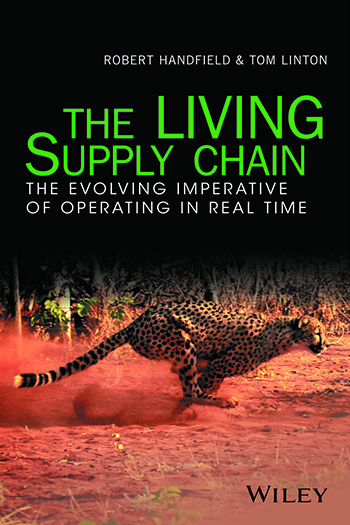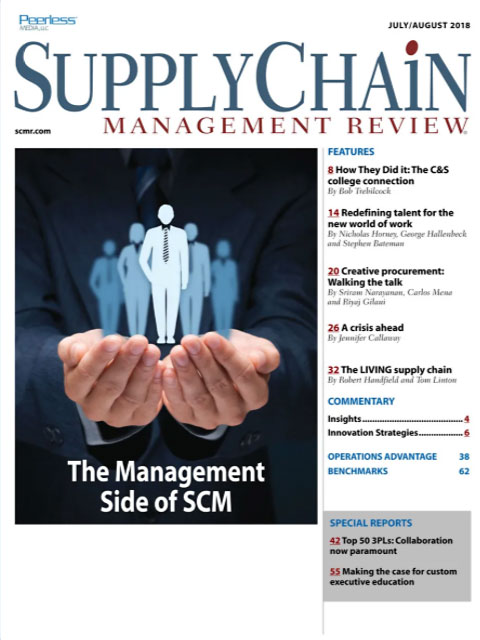Sorry, but your login has failed. Please recheck your login information and resubmit. If your subscription has expired, renew here.
July-August 2018
At Supply Chain Management Review, we’ve been writing about the talent crisis in our profession since at least 2012 when our MIT contributors were publishing a column on talent strategies. Last winter, the topic touched home when I picked up my local newspaper one Saturday morning. One of the lead stories was about two initiatives launched by C&S Wholesale Grocers with two local academic institutions: Keene State College and Franklin Pierce University. Browse this issue archive.Need Help? Contact customer service 847-559-7581 More options
Contract manufacturing was the original business of Flextronics. That was during the boom years of the 1990s and the early Internet days.
The company largely manufactured PCs for big names like HP, Dell and others. Contract manufacturing was a volume business with razor thin margins, and relied on the ability to scale up a new product assembly line anywhere in the world. By 2015, Flextronics was no longer a contract manufacturer in the traditional sense, and changed its name to Flex.
“We are in full transition to become a company, that when I think about it, hasn’t ever existed before,” explained Tom Linton, chief supply chain officer.
During a tour of the company’s Milpitas, Calif. facility, he continued: “In each of the organizations I’ve worked in, I liked to experiment with organizational models—and this is the biggest experiment of them all. And I believe we are achieving an essential alignment of procurement and the supply chain organization that is unique. We are influencing and shaping Flex’s corporate strategy, but we are also totally supporting it.”

This complete article is available to subscribers only.
Log in now for full access or start your PLUS+ subscription for instant access.
SC
MR
Sorry, but your login has failed. Please recheck your login information and resubmit. If your subscription has expired, renew here.
July-August 2018
At Supply Chain Management Review, we’ve been writing about the talent crisis in our profession since at least 2012 when our MIT contributors were publishing a column on talent strategies. Last winter, the topic… Browse this issue archive. Access your online digital edition. Download a PDF file of the July-August 2018 issue.Contract manufacturing was the original business of Flextronics. That was during the boom years of the 1990s and the early Internet days.
The company largely manufactured PCs for big names like HP, Dell and others. Contract manufacturing was a volume business with razor thin margins, and relied on the ability to scale up a new product assembly line anywhere in the world. By 2015, Flextronics was no longer a contract manufacturer in the traditional sense, and changed its name to Flex.
“We are in full transition to become a company, that when I think about it, hasn't ever existed before,” explained Tom Linton, chief supply chain officer.
During a tour of the company's Milpitas, Calif. facility, he continued: “In each of the organizations I've worked in, I liked to experiment with organizational models—and this is the biggest experiment of them all. And I believe we are achieving an essential alignment of procurement and the supply chain organization that is unique. We are influencing and shaping Flex's corporate strategy, but we are also totally supporting it.”
SC
MR


Latest Supply Chain News
Latest Podcast

 Explore
Explore
Business Management News
- U.S.-bound containerized import shipments are up in June and first half of 2024
- Expand supply chain metrics to cover the complete customer experience
- When disaster strikes, the supply chain becomes the key to life
- Leadership development for supply chain leaders
- A smarter approach to sustainability is vital for healthy, resilient supply chains
- When the scales tilt: Making vaccine access work for all
- More Business Management
Latest Business Management Resources

Subscribe

Supply Chain Management Review delivers the best industry content.

Editors’ Picks





